Originality.AI Review 2025: Is It Accurate or Too Aggressive?
Explore the accuracy and features of AI detection tools, comparing content authenticity verification and human-like text refinement.
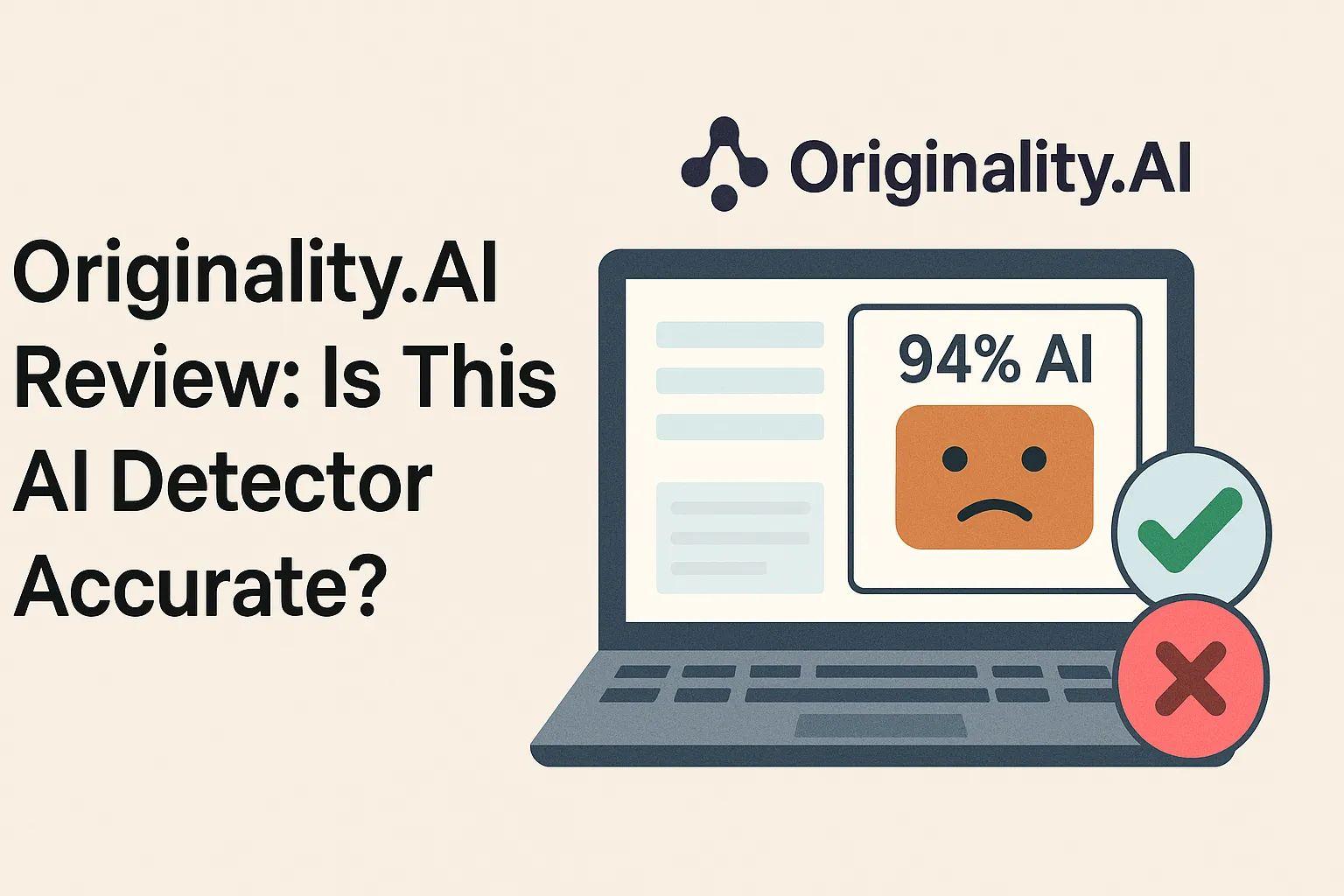
Originality.AI Review 2025: Is It Accurate or Too Aggressive?
Originality AI claims up to 99% accuracy in detecting AI-generated content. It's widely used by publishers, agencies, and site owners to verify originality. But is it as reliable as it sounds? We ran real-world tests—and the results raise serious questions.
What Originality AI Promises
Originality.AI uses NLP and machine learning to detect AI content, even when paraphrased. It includes:
- AI detection with three models (Lite, Turbo, Multilingual)
- Plagiarism checking
- Readability scoring
- Multi-language support (15+ languages)
- Chrome extension and API
| Model | Claimed Accuracy | False Positive Rate |
|---|---|---|
| Lite | 98% | Under 1% |
| Turbo | 99%+ | Under 3% |
| Multi-Language | 94% | Varies |
It sounds impressive. But accuracy on paper isn’t always accuracy in practice.
Who Should Use Originality.AI?
Originality AI is built mostly for publishers, agencies, and website owners who manage large volumes of content. It's ideal for screening guest posts, freelance submissions, and AI-assisted writing—but not always ideal for students or academic grading.
If you're working with content that’s clearly written by humans, this tool might be too aggressive. But if you regularly screen bulk content from various sources, Originality AI gives you a fast way to flag potential AI use.
✅ Good for: SEO teams, editors, content managers
❌ Risky for: Teachers, students, freelance writers
Real-World Tests: Is Originality AI Accurate?
We tested Originality.AI with three types of content:
Test 1: Human Blog Post (Written in 2022)
A real blog article written three years ago—before ChatGPT or any similar tools existed—was flagged as 61% AI.
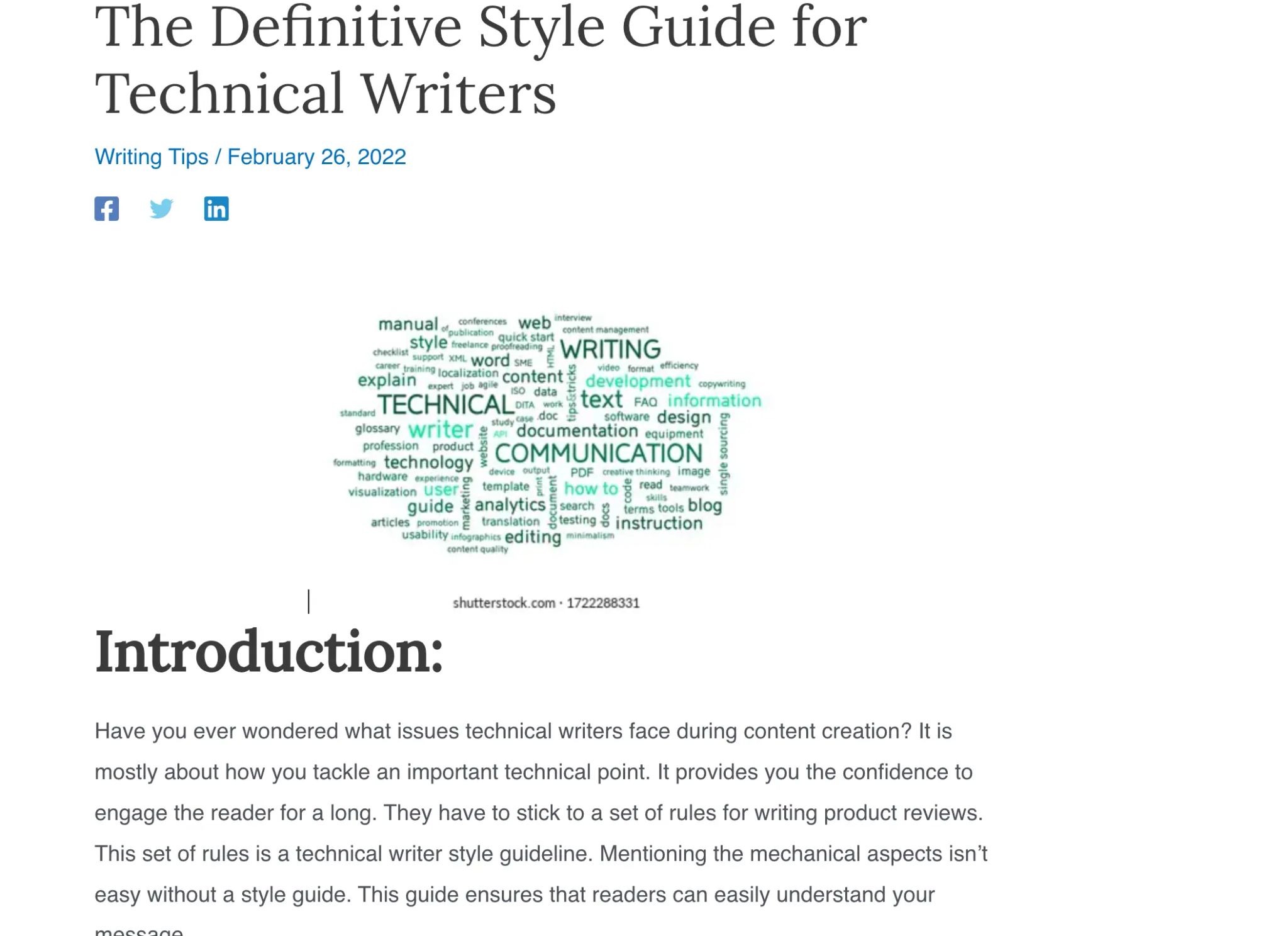
Original blog post written in 2022 — 100% human-written content with no AI tools used.
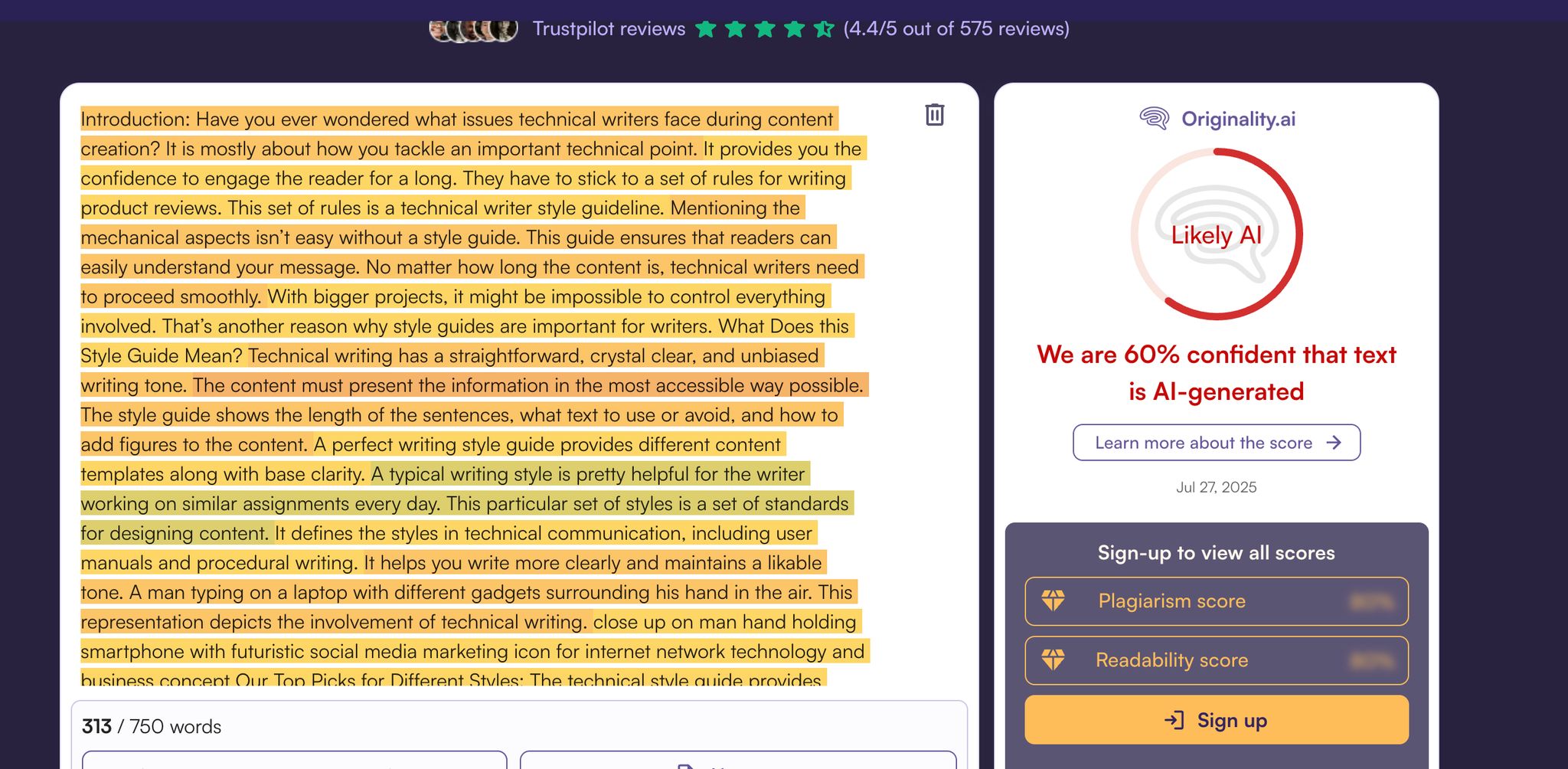
Originality.AI flagged it as 61% AI — a clear false positive on authentic, human-written content.
✅ Human-written content
❌ Flagged as AI
Test 2: Lightly Edited AI Content
We gave GPT-4 a prompt, lightly edited the output, and ran it through Originality AI. Result: 100% AI detected—as expected.
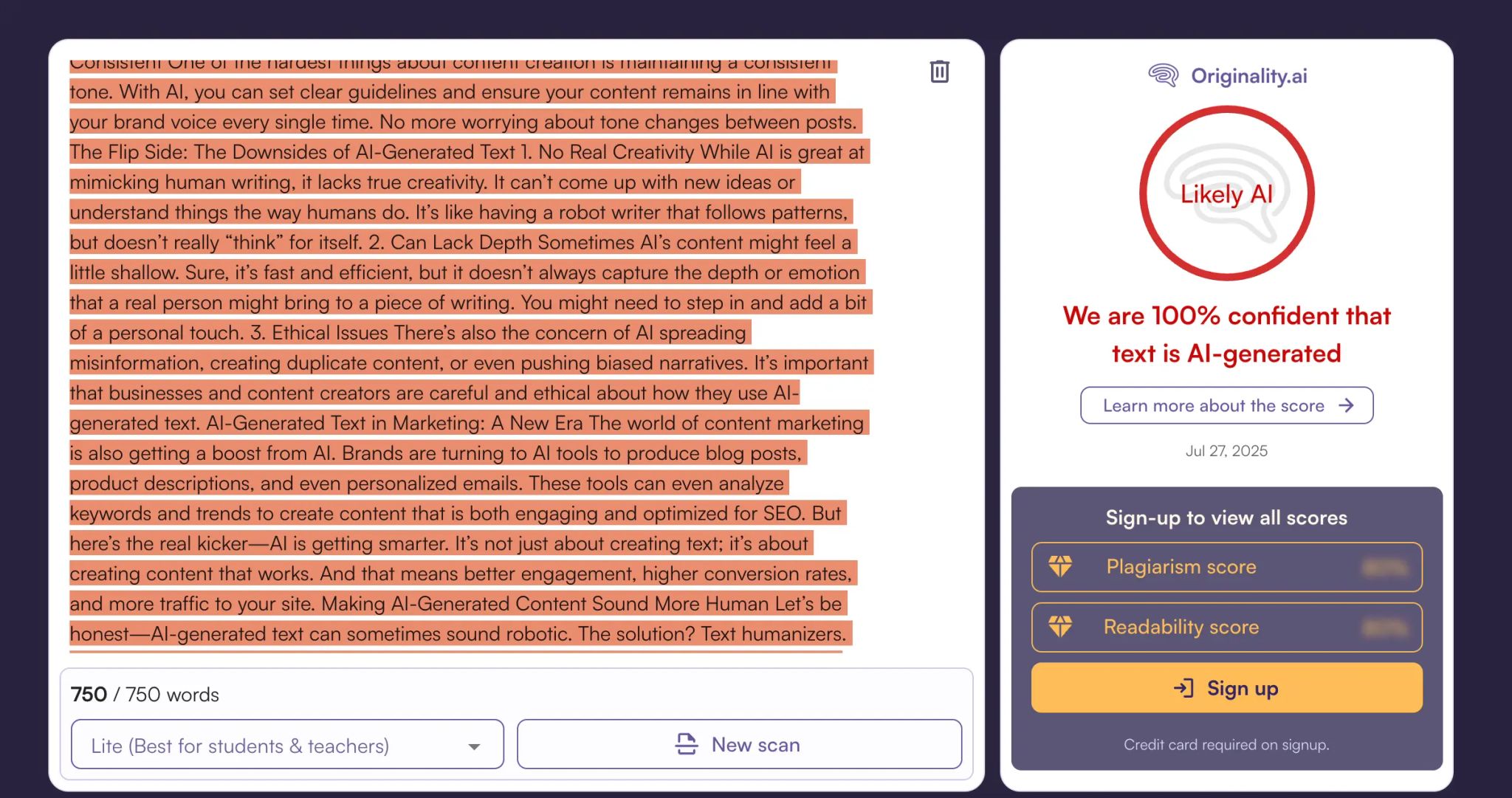
✅ AI-written
✅ Detected as AI
Test 3: Fully Rewritten AI Content (Humanized)
We ran a piece of AI-generated text through the Standard Mode of HumanizerPro—without any manual editing or custom tuning.
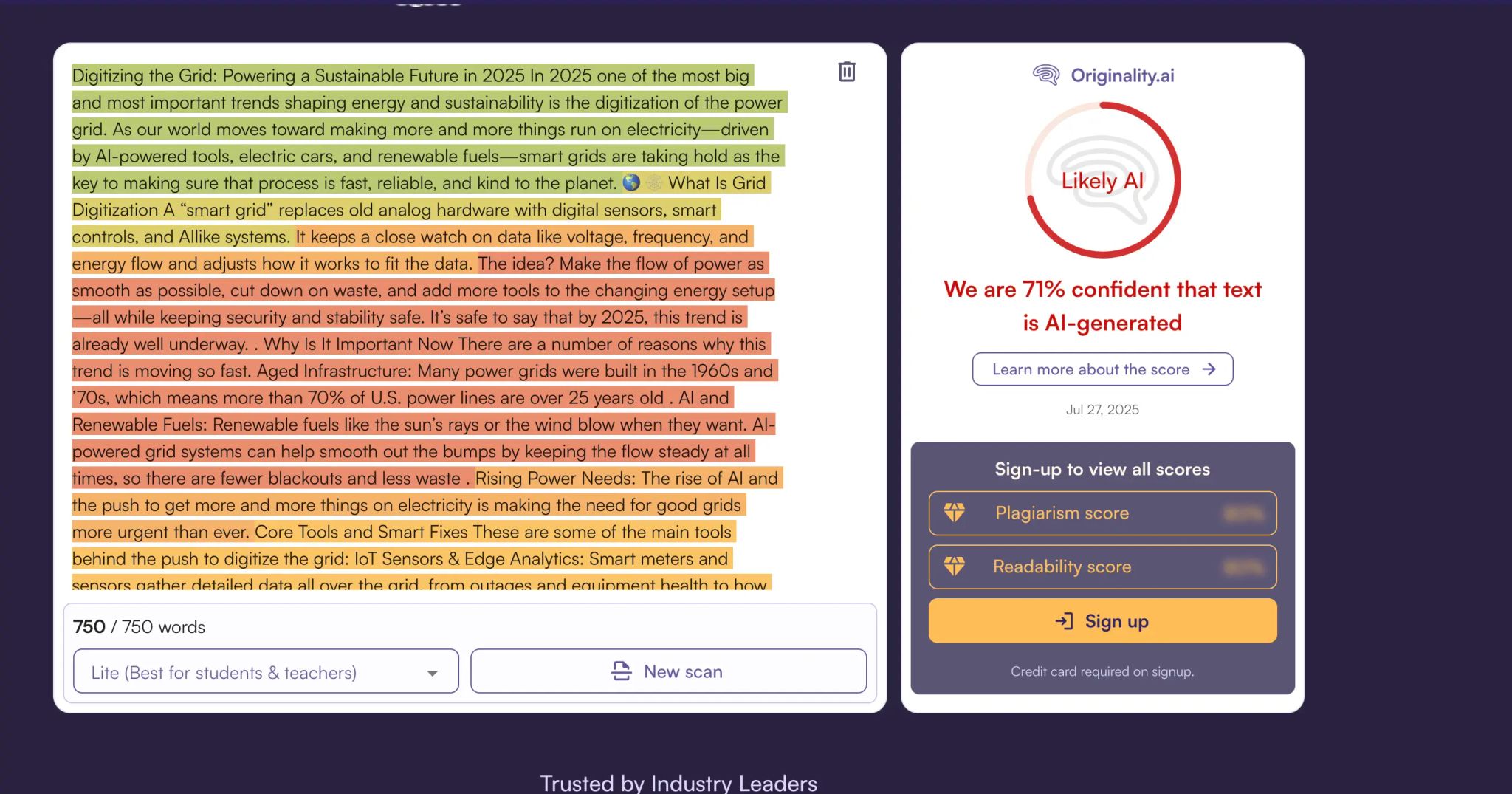
This AI-generated content was rewritten using HumanizerPro (Standard Mode) and received a 29% human score on Originality.AI.
When checked on Originality AI, the result showed 29% human.
🟡 Humanized AI (Standard Mode)
📊 Originality AI Score: 29% Human
False Positives: When Detectors Go Too Far
Many users report that Originality AI flags genuine, human-written content as AI. In our own test, a 3-year-old blog post—written long before ChatGPT existed—was flagged 61% AI.
This kind of false positive isn’t just frustrating—it’s dangerous.
- A flagged article may be rejected by publishers.
- A flagged essay could get a student in trouble.
- A flagged report might lose credibility.
Over-detection does more harm than good. The tool’s strict detection models leave no room for nuance, and that means even well-written, natural content gets wrongly flagged.
Important: Detection ≠ proof. A score alone shouldn’t decide someone’s credibility or intent.
What It Means for Institutions
Many schools and organizations rely on tools like Originality AI to screen for AI use. But if the tool incorrectly flags a human essay, the student can face unfair penalties.
Important: Institutions should not make disciplinary decisions based solely on Originality.AI results. False positives happen—even with old, verified human content.
Always combine detector results with manual review.
Turnitin vs Originality AI
Turnitin is one of the most commonly used AI detectors in academic settings. It’s more conservative in its scoring and often flags less content as AI—sometimes under-flagging.
| Feature | Originality AI | Turnitin |
|---|---|---|
| Aggressiveness | Very High | Moderate |
| False Positives | High (even on human) | Lower |
| Trusted by Schools? | No | Yes (widely adopted) |
| Customization | Yes | Limited |
Originality AI may be good for publishers screening bulk content, but not ideal for academic grading.
Why Schools Shouldn’t Rely on Detectors Alone
Originality AI is often too aggressive to be used for academic decisions. Instructors who rely solely on detection tools risk unfairly penalizing students for writing that’s 100% original.
We’ve seen real examples where:
- Human-written essays were marked as AI.
- Rewritten AI content was flagged despite strong flow and context.
- False positives led to stress, appeals, and trust issues.
Institutions should treat AI detectors like a first filter, not a final judge.
“AI detectors are tools, not truth machines.”
Always combine them with manual review, writing samples, and common sense.
GPTZero: A More Balanced Detector
Compared to Originality AI, GPTZero performs more reliably on both AI and human content. It detects GPT-4, Claude, and Gemini output with solid accuracy—while maintaining a lower false positive rate.
- Sentence-level scoring
- Highlighted detections
- Transparent results
It’s better for educational institutions and content creators who want fair, explainable results.
For a full breakdown, read:
GPTZero vs AI Humanizers: Which Wins in 2025?
Best AI Detectors 2025: Side-by-Side Comparison
Here’s a quick snapshot comparing the most-used AI detectors on the market right now:
| Detector | Accuracy | False Positives | Human-Friendly? | Best For |
|---|---|---|---|---|
| Originality.AI | High (raw AI) | High | ❌ No | Publishers, agencies |
| GPTZero | High | Low | ✅ Yes | Schools, content creators |
| HumanizerPro AI Detector | Balanced | Very Low | ✅ Yes | Writers, students, reviewers |
Originality.AI is strong at catching unedited AI content. But for fairness and trust, GPTZero and HumanizerPro offer a better balance of detection and accuracy—especially with human-written or humanized content.
The Role of Humanization (and a Safer Alternative)
When it comes to bypassing AI detection, rewriting matters more than paraphrasing. Simple synonym swaps don't work anymore. You need to:
- Change sentence flow
- Add human tone and context
- Use real-life examples
- Avoid robotic phrasing
A properly rewritten article should pass most AI detectors—and not be flagged as AI.
Some humanizing tools also come with built-in detection. For example, the AI Detector Tool (limited) built into HumanizerPro is designed to avoid false positives. It gives a more accurate score without flagging human writing.
Final Verdict: Should You Trust Originality.AI?
✅ Pros
- Fast scanning
- Strong detection on raw AI content
- Extra tools: readability, plagiarism, fact-checking
❌ Cons
- Flags genuine human writing
- Too aggressive for educational use
- Not accurate enough to make final judgments
If you're a publisher screening bulk content, Originality.AI has value. But if you're a teacher, content creator, or editor—it’s better to use multiple tools and always review the context.
For humanized or rewritten AI content, tools like HumanizerPro can help improve clarity and flow—so it reads naturally and avoids false flags.
Frequently Asked Questions
Does Originality AI give false positives?
Yes. In our test, it flagged a blog written in 2022 as 61% AI, showing it may over-detect human content.
Is Originality AI better than Turnitin?
Not for academic use. Turnitin is more conservative and trusted by schools. Originality AI is better for publishers screening bulk content.
Can students rely on Originality AI results?
No. It may flag genuine human writing. Use it as a guide only, and always ask for a manual review.

Kamran Khan
Kamran Khan is the founder of AI Humanizer PRO and a leading voice in the ethical use of AI-generated content. With years of hands-on experience in AI, SEO, and digital publishing, he built HumanizerPro to help creators and professionals turn robotic AI text into clear, human-like writing that meets real-world standards.